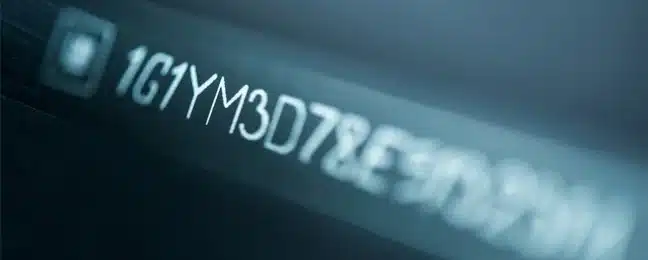
How to Check VIN Code - Tips and Tricks
The VIN code can be used to check a vehicle’s history, but it can be difficult to find on different types of vehicles. Luckily, some tools allow you to easily look up your car’s information using just a few simple pieces of data.
Locating the VIN: Where to Find the Code on Different Types of Vehicles
The VIN is usually found on the driver’s side dashboard and also on the front of the engine block. You can find it on the driver’s side doorpost, too. If you’re looking for a quick way to locate your vehicle’s VIN code without having to search through it manually or dig through paperwork, check with your local DMV office they should have information about where they keep their records available online as well as in person. You can also check on an online service such as STAT 1 VIN.
Using Online VIN Checkers: Exploring the Benefits of Digital Tools
As a vehicle owner, you should be aware of the importance of checking your vehicle’s VIN code. This code is used to track and identify every vehicle in America. You can use this information to verify the authenticity of your car or truck, as well as learn more about its history. To do this, just use the best free VIN decoder, where you can enter the car’s code or other data.
Decoding the Vehicle’s History: Unveiling Past Ownership, Accidents, and Title Information
There are a few ways you can decode the VIN. The first and most obvious one is to look at the sticker on your car’s windshield, which should be located near or underneath your rearview mirror. This will tell you all of the information about your vehicle including its make, model, and year of production; engine type; number of doors (or seats); transmission type; fuel type; and more but it won’t tell you anything about its past ownership or history.
You can also check this information by entering a vehicle’s VIN into an online database like VinAudit or Carfax (which we’ll discuss later). These services provide records with details like how many owners have had their hands on each car since its original sale date as well as whether any accidents have been reported on record against that particular vehicle over time.*
Identifying Potential Fraud: Tips for Spotting Stolen or Altered VIN Codes
There are many ways you can identify potential fraud.
- Check for signs of tampering. If you see any damage to the VIN decal, or if someone has tried to peel it off, that’s a red flag.
- Check the length of your VIN code; it should be 17 characters long (including spaces). If yours is too short or too long, this could mean that someone has altered your vehicle identification number (VIN) so they can resell it as new and pocket all profits from doing so!
- Make sure your VIN matches the year of your car; if not, either someone has tampered with yours or they’ve switched out parts between cars to make them look identical but still sellable as used vehicles (which means less money spent on repairs). Either way: Not good!
Finally and this one might seem obvious but still bears mentioning always check online databases like Carfax before buying anything used so that you know whether there would be any reason why someone wouldn’t want those particular items anymore.”
Conclusion
We hope that this article has helped you understand how to check VIN codes. As we mentioned earlier, drivers need to know what they’re looking at when they see a VIN on their vehicles. The best way to do this is by using an online tool such as Vin Decoder or CarFax both of which offer free services that allow users to enter their vehicle information and receive reports back within minutes!
With a solid foundation in technology, backed by a BIT degree, Lucas Noah has carved a niche for himself in the world of content creation and digital storytelling. Currently lending his expertise to Creative Outrank LLC and Oceana Express LLC, Lucas has become a... Read more